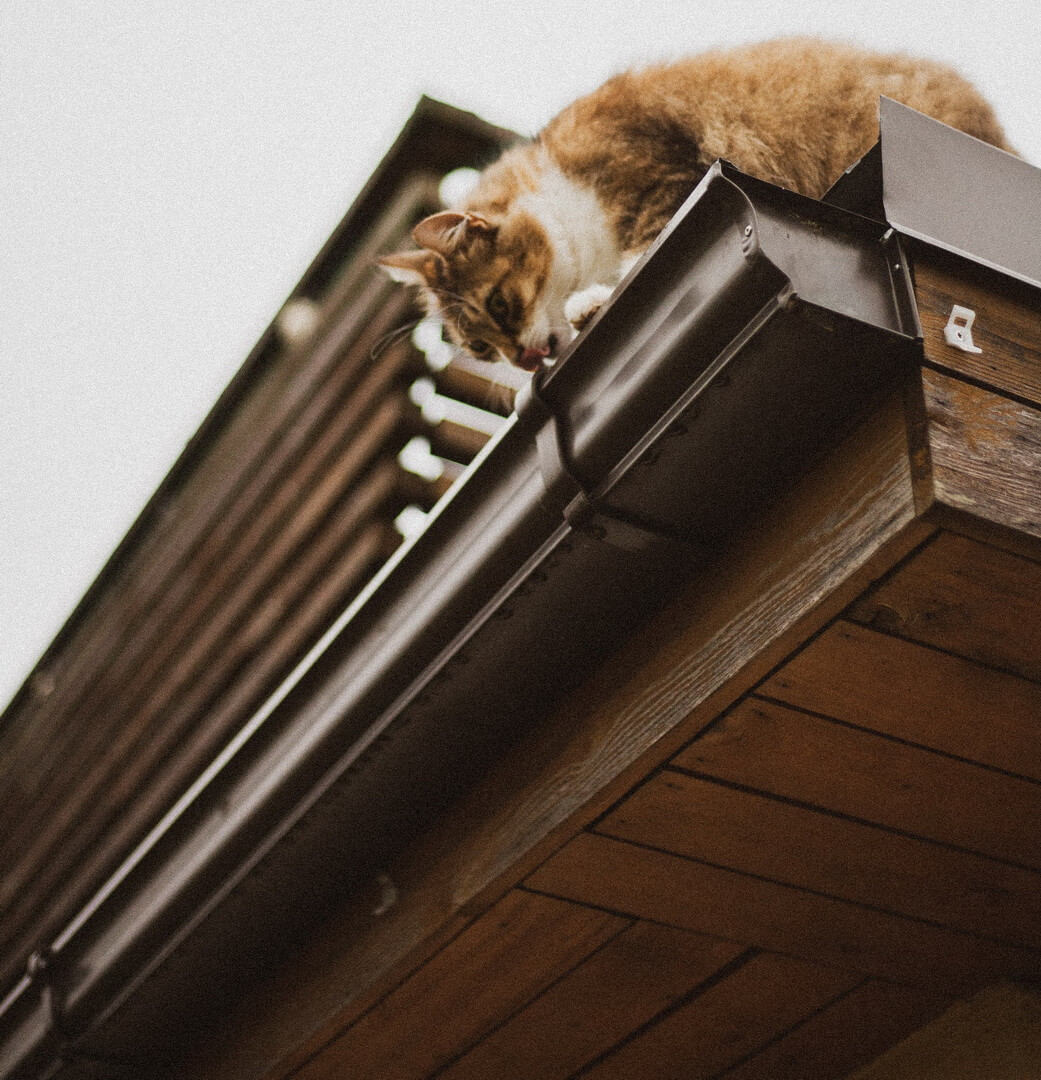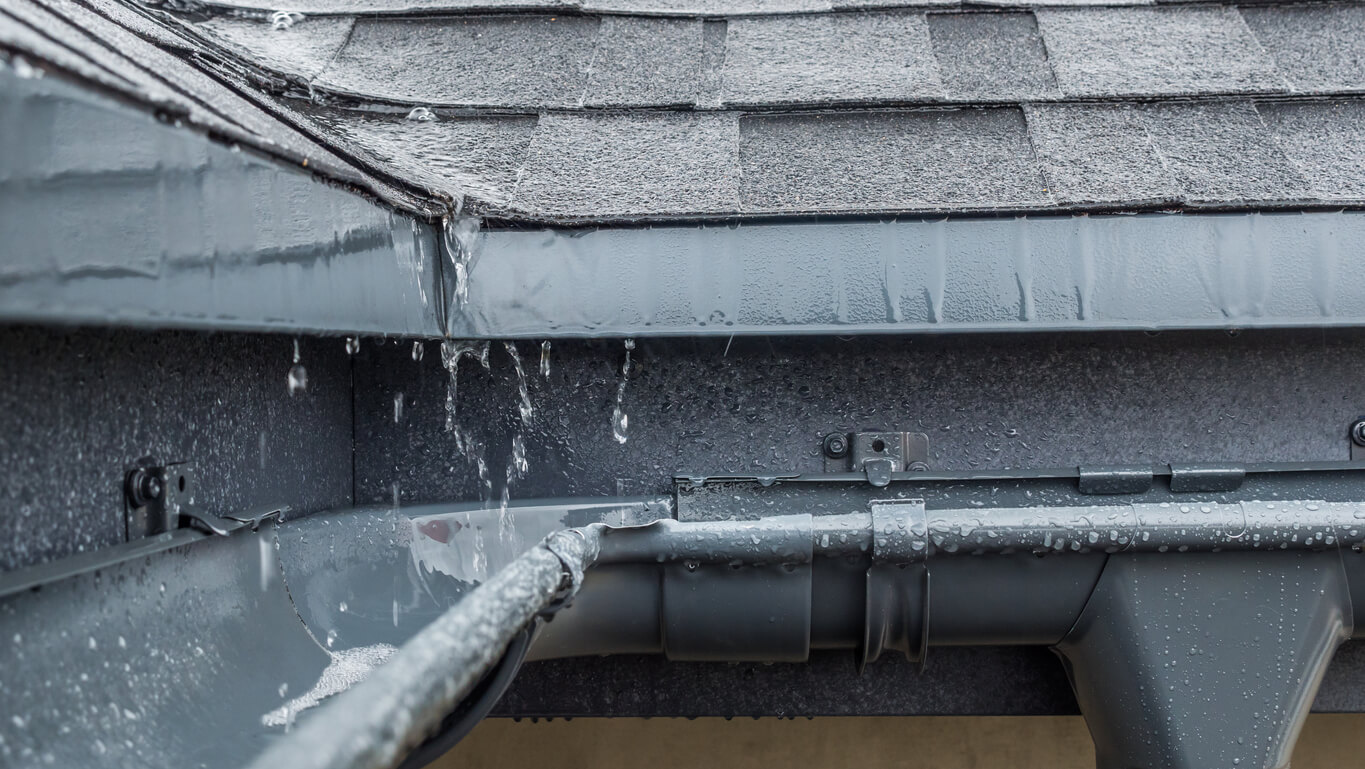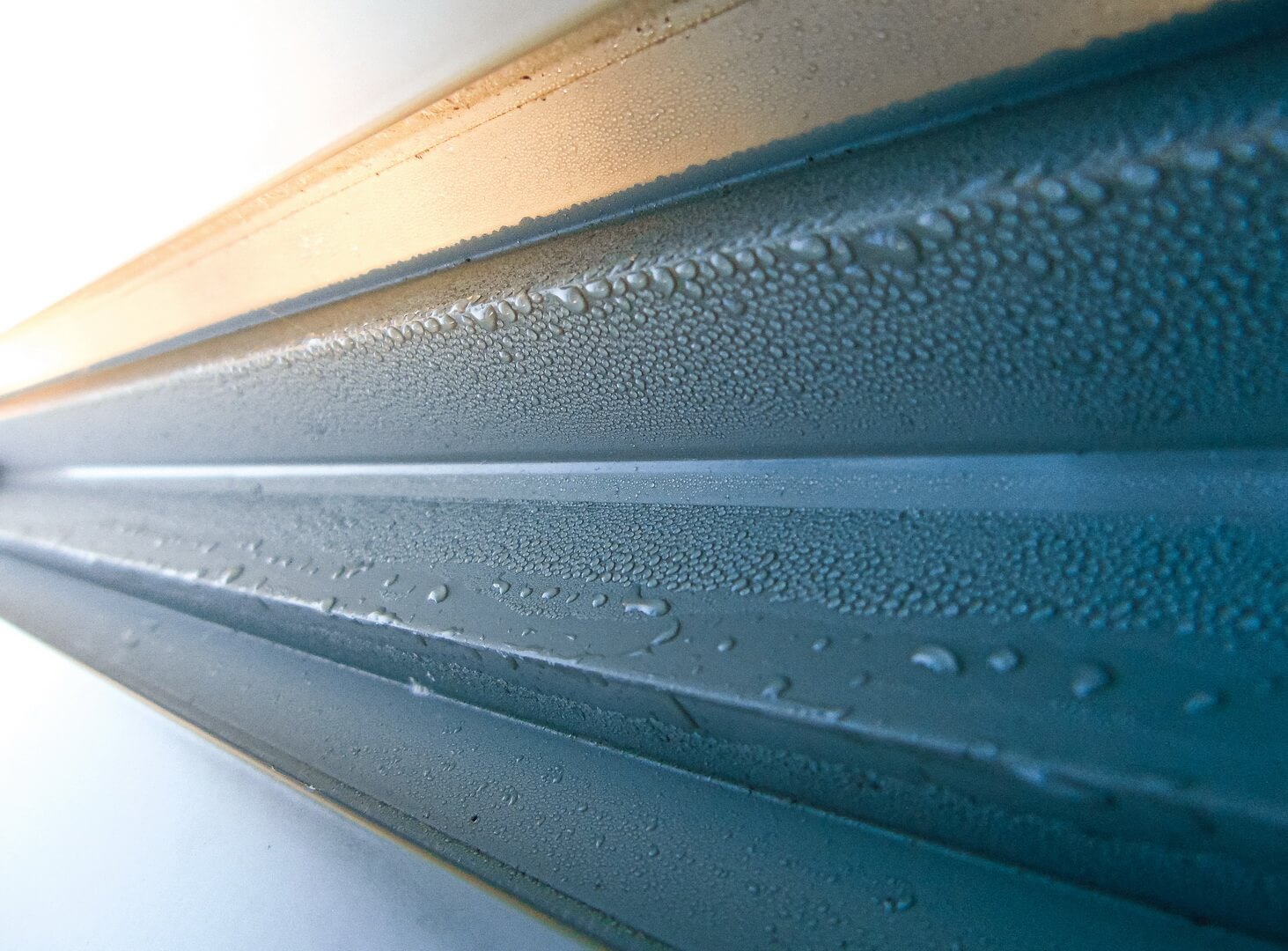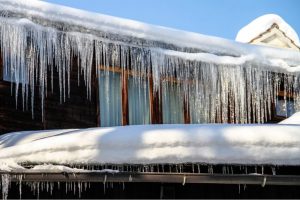Tips to Repair Eavestroughs And Gutters
Oct 22, 2023

Eavestroughs are those exterior structures in your home that you rarely think about. So long as there are no visible signs of damage, you’ll quickly assume that the gutters are functioning the way they were designed to work.
Whether you own a custom-built house or a townhouse, gutters, like all other elements that make up your home’s roofing, need proper care in order to do what they need to do – protect the home from damage. Simple things like cleaning of eavestroughs at least once a year will go a long way. Inspections also need to be done regularly to ensure the eavestroughs and gutters are in tiptop shape.
There are cases where repairs may be recommended from time to time. We’ll begin by looking at some common gutter repair issues we’ve seen in homes today and also cover some basics on eavestrough repair.
Most Common Gutter Repairs

Like most people, you probably don’t think about your gutters at all. You only think about the health of your gutters when something goes wrong. Your gutters are crucial, and you should pay more attention to them. Gutters help you maintain your foundation in good condition by channelling water away from your home’s foundation. You can’t afford to compromise your foundation, given that it holds up your home. Keeping your gutters in good condition helps you keep water off the foundation. Therefore, ensure that your gutters are always in good condition.
How to repair sagging gutters
Fixing sagging gutters is paramount if they are to maintain their optimal performance and keep the house safe from rainfall and wind. If your system is no longer as tight as it used to be because of constant exposure to outside elements, try the following repair tips. Remember, hiring a professional is always a better alternative.
Identifying the State and Cause of the Sag
When you find out what is causing the problem, you can create a plan that gives you a more lasting solution. You can also implement proactive mechanisms to prevent the issue from recurring.
A sagging gutter is easy to identify – it will look uneven or out of shape. Common causes to look out for include a storm and human error during maintenance or repair of the roof.
In most cases, an obvious sag can only be fixed by replacing the damaged section. If the sag is not obvious, you will have to inspect the gutter and determine its cause. If the problem is because of accumulated debris, installing gutter guards will be the ideal solution. If it is overwhelmed by rainfall, a bigger gutter will fix the issue.
Clear entire system of debris
After the first step, proceed to clear all debris from the gutter. Sometimes the trough will resume its original position when the pressure exerted by leaves and debris is lifted. Even so, you will still need to find a permanent solution. Leaving it unrepaired will cause it to sag again when the waste accumulates on it.
Replacing Damaged bracket/hangers
Gutters can also sag when the hangers and brackets that are meant to secure them in place get broken. Replacing these accessories is usually enough to fix the problem, but you have to remove the gutter sections that should be repaired before replacing the brackets and hangers. Make sure the holes for the new accessories are fitting and not too large for the screws.
Replacing damaged spikes along with the system
Missing or damaged screws and spikes meant to support the gutters can also result in sagging. Searching for more superior screws and spikes that are befitting for the gutter will be sufficient to avert the problem.
Make sure they can fit tightly into the holes, and the holes are in a straight line to prevent the gutters from shifting after installation. Bigger holes can be filled with water-resistant caulk. Leave the caulk to dry properly before installing the spikes, and use sturdy brackets to tighten them.
The main cause of sagging gutters is the weight from dirt, debris, twigs, and leaves. It causes hangers, the hardware that holds the gutter to the house, to loosen and pull out when they can no longer carry the extra weight. Tightening the hanger screws could fix the gutter hanging problem. If the sagging is caused by the hangers being positioned too far apart, you can solve the issue by installing new hangers and placing them closer.
While these may seem like simple repair procedures, a lot can go wrong if not handled by professional roofers. To reduce the chances of more damage, call experts who have done numerous similar repairs before. D’Angelo & Sons are available for all your gutter repair and replacement needs, including emergencies.
Proper Gutter Maintenance Prevents Damage
You don’t have to observe your gutters every day to spot damage, and it’s not hard to keep your gutters clean and free from dirt and debris. You only need to adopt a regular gutter maintenance schedule. You should not let your gutters go for months without inspection and maintenance. Your gutters will serve you for many years if you stick to a regular maintenance schedule. Some of the typical gutter repair problems are:
- Clogged Gutters that Won’t Drain
Clogging is one of the most common gutter problems. Clogged gutters can’t drain properly and will overflow during the rainy seasons. When water can’t drain properly, you may experience issues with the foundation. Regular cleaning prevents the accumulation of dirt that could lead to clogging.
You can keep your gutters free from debris by sticking to a twice-a-year maintenance program. The ideal maintenance program may vary depending on the climate you live in. By late fall, most of the leaves have fallen, and it’s an ideal time to clean your gutters. You can also clean the gutters in spring, between March and April, to ensure that the gutters are clean by the time you receive the April rains.

What can you do to prevent excessive debris accumulation? If you feel like you are dealing with too much debris in your gutters, you may consider a gutter covers installation. However, gutter covers aren’t just expensive to install, but they also require regular maintenance.
- Gutter Leaks and Holes

You might notice water pouring or trickling from the middle of your gutters. Leaks and holes can occur when you least expect them but are often easy to fix. Larger holes require patching, but you can use a gutter sealant to repair the leaky seams. You can buy patching kits at a hardware store and repair your gutters. When patching a hole, you should ensure that you use the same material as the gutter. Using a different material to patch a leaky gutter might lead to erosion.
- Knocked Down or Damaged Gutters

Windstorms and heavy rainstorms could knock down or damage your gutters. If the gutters are not broken, you only need to re-fix or re-hang them. You might also need to replace certain areas of the gutters if the damage is extensive. There’s nothing much you can do to prevent gutter damage from natural causes. However, you should ensure that your gutters are well installed and secure.
- Improperly Angled Gutters

Gutters need to be properly pitched or angled for the water to flow correctly. The slope should be ¼ inch for every 10 feet of gutter. It’s easy to determine whether your gutters are angled correctly. If you see water standing during a rainstorm, you probably need to adjust the gutters. At times, all you need to do is bend the gutter to the right angle. However, at times you might need to reinstall the hangers, and this calls for an expert.
- An Inadequate Gutter System

If your home doesn’t have a proper gutter system, the consequences could be detrimental. It’s essential to have an adequate gutter system to prevent damage to your foundation or siding, especially during rainstorms. If you require new gutters, you should have an expert install them. This will help you avoid installation errors that could lead to additional issues.
- The Sidewalk is in the Way
Pooling water on the sidewalk can change the aesthetic appeal and functionality of the entire sidewalk, rendering it useless. There is no error-free way of getting water from such places, but a retractable downspout can minimize the damage and effects of water leaks. Retractable downspouts are not very effective with light rains, but they can be very efficient with moderate or heavy rainfall. They extend when there is more water flow and connect to the main downspout, which drains that water away at the properly designated location. They then roll back into the retracted position when the rain stops. The leaking experienced with light rains will not be enough to damage your landscape. Installing them is also straightforward and will not require expert knowledge.
- Gutters on Your House Are Loose
Loosening is a common problem with old gutters, especially those that were installed using ferrules and spikes. Tightening those spikes when they become loose does not provide a permanent solution. A better eavestrough repair method would be ensuring the gutters remain in the correct position by using fascia hangers.
Using gutter brackets is easy and can be done as DIY. Hook one side of the bracket on the gutter lip and place the other side on the fascia board. Do not tamper with any spikes if they are present. Removing them will leave a visible hole on your gutters, thereby reducing their visual appeal and increasing the chances of leaks.
Your choice of gutter brackets should depend on the type of roof you have. For instance, if it is a metal roof, brackets with in-built screws will be better. The same applies to shingles hanging too close to the fascia. Such gutter brackets are a little more costly, but they are easier to use, especially where accessing the fascia may be a little challenging.
- Water Drips Behind Your Gutter
Water dripping behind the gutter is not a common problem, but it can still happen, especially in homes where the installation was done poorly. If your roofer did not use flashing when putting your gutters in place, you might need eavestrough repair for water drips during the lifespan of the gutters.
The best solution is to use a gutter apron. It is a device with a bent shape usually installed under the shingles and over the gutters. They should be installed at 10-ft intervals, which means you may be forced to remove the hangers as you proceed with the installation. Use sheet metal screws to tighten the aprons in place.
If you have a drip edge at the intersections between the shingles and the gutter, use roll flashing to install the gutter apron. That is essential if the eavestrough is below the drip edge. Make sure you tuck it properly over the gutter and under the drip edge. You may also need tin snips to cut the roll flashing in the recommended strips. Look for steel roll flashing if you have steel gutters to avoid the corrosion that usually happens between aluminum and galvanized steel.
- Downspout is In The Way
Sometimes downspouts cause a lot of inconvenience by hindering other activities like mowing. One of the solutions you can try is installing a hinge at the lowest point of intersection between the downspout elbow and the part that runs into the yard.
For DIY installation, start by cutting the downspout at a 45-degree angle using a metal cutting blade or tin snips. Then connect a two-piece hinge using sheet metal screws. You can buy them online or at your nearest home hardware products store. Remember, you can always customize the hinges by painting them to match the colour of your downspout.
- Sound of Drips Drives You Mad
The endless sound of dripping water in the downspout can be very annoying, but there is a quick solution you can try to stop it. Tie a rope on the hangers and let it run along into the downspout. Instead of water droplets falling directly into the downspout, they will cling to the rope, eliminating the sound.
However, using a rope can cause other problems. If your area is prone to lots of rainfall or your gutters are not clean, you may experience overflow. The debris clogging the gutters, together with the restriction caused by the rope, may cause flooding on the eavestrough, which may result in pooling water near the house when it rains.
Remember to use a nylon rope to avoid having to deal with rotting fibres.
- Gutter Overflow During Heavy Rain
A gutter size that does not match the downspout size will automatically cause overflow problems, especially during heavy rain. For instance, you cannot have a 50 feet gutter connected to a 2 x 3-inch downspout and expect smooth water flow. So instead of installing an additional downspout to the gutter system, have a single big one like a 3 x 4-inch downspout.
The eavestrough repair process involves getting rid of the old downspout, then using the new drop outlet that comes with the new downspout to trace an outline to be used for the replacement. Cut appropriate-sized holes using a tin snip or an oscillating metal cutter. Then insert the drop outlet into the newly cut hole and attach the downspout using the correct screws. Finalize the process by applying seam sealer for gutters between the outlet and the downspout.
These accessories are not expensive and are available at home improvement hardware stores. However, you may spend a little more when you select colours that are not readily available such as brown. The other alternative is to buy the white ones and paint them the colour you prefer. Compare the costs and choose the option that suits your budget.
- Consider Repairs With Slip Joint
Eavestrough repair with slip joints is ideal when only a section of the gutter is damaged. For instance, if a tree falls and destroys less than 5 ft of a 60-ft gutter, you can reduce repair costs by working on the damaged section only with the help of slip joints. The process is easier if you have a popular gutter colour like white because their accessories are generally readily available. However, you can still find a unique-coloured slip joint to match your gutter if you make a special order. You can also make one that suits your exact needs from a box mitre, especially since the mitres are available in a variety of colours.
It is advisable that you purchase a box mitre when you place an order for the new gutter section. It can be an inside or outside one. Using tin snip, cut the box mitre at three inches to get a slip joint. Next, place the new gutter near the old one and put the patch below the seam.
If you cannot handle the slip joint repair yourself, call an expert to do it for you.
What happens when the gutters are clogged?

Clogged gutters can cause havoc in your home. Gutters need to be properly maintained because they help protect your property from water damage. Clogging is common because debris, leaves and other unwanted elements could easily find their way inside the gutters. If you let them stay in the gutter system for too long, they become clogged and water cannot be channeled away from your home as it is supposed to. This results in costly damage.
Instead of exposing your roof to clogged gutters and reducing its expected service life, create a roof maintenance plan that includes gutter cleaning and eavestrough repair Kitchener. The unwanted leaves or debris inside the gutters limit water flow causing a blockage. The stagnant water could easily spill over onto the roof or find its way inside the shingles or the wood causing it to rot. Other than that, the water could also find its way into the house and damage areas such as siding, the fascia and window frames. In fact, a common sign to look out for if you suspect gutter damage is rotting or deterioration in areas such as the siding.
Clogged gutters can ruin a home’s foundation. When the gutters are clogged, water doesn’t get to the downspouts instead it falls right on your home’s foundation. When the gutters remain clogged for an extended period, you’ll notice a pool of water around the property’s foundation. The pool of water can easily sip into the property’s basement. Water is also not recommended near the home’s foundation as it could cause cracking.
How do you fix a leaky gutter?

First and foremost, you’ll need to do some investigations to find out where the issue lies. In most cases, the issue is with the gutter seams. Bear in mind that there are different types of gutters and each has its own unique approach to repairs. For instance, if your home has metal gutters, they could be exposed to water damage that leads to corrosion. Vinyl gutters, on the other hand, have several sections, which are connected by a gasket that deteriorates over time due to exposure to the elements.
How to repair a metal gutter

Begin by cleaning the area of the leak and removing any old sealant present in that section where water is sipping through. Once the joint is clean and dry, you can go ahead and apply a sealant. The most highly recommended sealant for metal gutters is silicone caulk. You’ll need to give it adequate time to dry. We recommend performing these repairs on a dry period when no rain is expected.
How to repair vinyl gutters

If a bad gasket causes the gutter issue, you will need to replace it. You can easily find a replacement gasket for your gutter at the local hardware store. If not, it’s best advised to reach out to the manufacturer of the gutter system who will recommend where to get the ideal gasket or better yet, consult a qualified eavestrough repair service to perform this replacement.
If you notice small, pin-sized leaks in your gutters, you can easily fix this by applying a sealant. You’ll need to keep a close eye at the sections that have small leaks and use the same silicone caulk to seal these areas. We don’t recommend using a sealant to seal large holes. If this is the case, consider replacing the entire section of the gutter that has been damaged.
How to fix a sagging gutther
Have some sections of your gutter started sagging? This is a very common issue that usually occurs due to the weight of water when it rains or snows. Sagging gutters can cause water damage because they won’t sustain the water causing it to overflow to the eavestrough and even ruin the property’s foundation. The gutters could be sagging because of a minor issue like a missing nail or a loose screw. Sometimes sagging occurs due to a more complex issue that needs professional eavestrough repairs.
If the gutter is sagging due to a loose or missing nail, you can easily fix this by tightening the screw or replacing the nail that was missing. You may also want to look out for the fasteners that are used to support the eavestroughs. Sometimes they get damaged or loose and need to be replaced. You may have to replace the fasteners in a different spot if the original location has become worn out and is unable to support the new ones. Just make sure that the angles are properly maintained so that the gutters do not incline in the wrong way. Ideally, gutters are designed to have a slight incline away from the downspouts. This helps to direct water away from the home’s foundation.
How long should you expect the gutters to last?

Just like different roofing materials, gutter systems have varying lifespans. On average, the gutter system will have a service life of about 20 years before it needs to be replaced. There are, of course, lots of factors that will determine whether the gutter system will live up to its expectations. For instance, materials like vinyl are known to be very durable and can withstand harsh climates. Additionally, the climate in your area, as well as the level of maintenance, will determine how long the gutters will last.
We have some really durable materials used in gutter systems today. Good examples are aluminum and galvanized steel, which can last for up to 20 years. Copper gutters are also very durable and probably the best option for homes that are prone to harsh weather conditions. Copper gutters that have been properly installed and well maintained over the years can last for about 50 years before you even consider a replacement. Although options like vinyl gutters are cheap and easy to install, they have a shorter life. The manufacturers of vinyl gutters give an average of 20 years as the expected lifespan but there’s a high chance that they will not even last this long. When choosing the material for your gutter system, consider things like the climate in your area e.g. vinyl doesn’t do so well in cold climates. It can become brittle and prone to cracking in low temperatures.
Your eavestroughs need proper maintenance in order to give you good value for money over the years. Consider hiring a qualified roofing professional to inspect your gutters regularly and make sure cleaning is done at least once every year.





